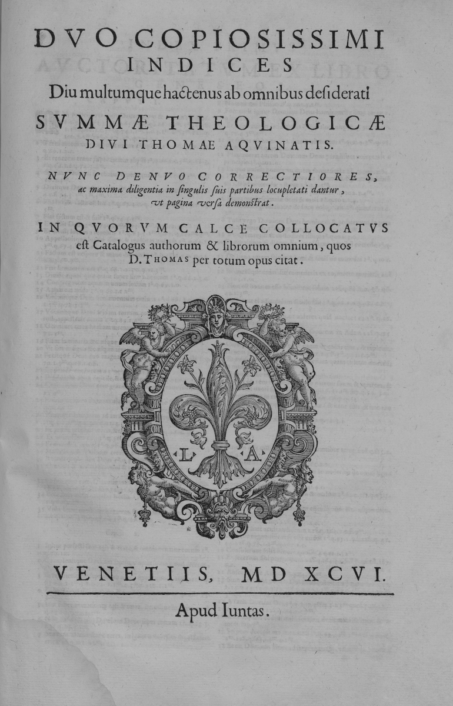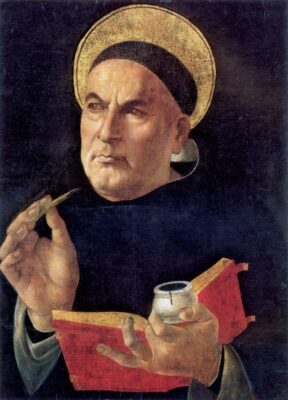
Curiosity, rumors, second-hand recollections, and imaginative speculation continue to fuel interest in a topic of widespread interest—How The Urantia Book came into existence. While the true story likely never will be known by humans simply because it involves things beyond our comprehension, it’s possible to amuse ourselves by creating a plausible story from these suppositions as they combine with information taken from The Urantia Book and the history of Christianity. So, consider the following as mere speculation.
Emma Christensen, the last of the Contact Commissioners, told me that work on the revelation began in the Middle Ages. Other apocryphal sources specify the 1200s. From comments in The Urantia Book, we can reasonably assume that Machiventa was present on the planet in the capacity of Resident Governor General sometime in the High Middle Ages. This period, particularly in the 12th century, saw a widespread spiritual awakening across Europe. It was the apex of Christian civilization. There was a desire to know more about Jesus and how to live a Christ-like life (see references below).
The problem was that, with the sketchy biblical account, a Christ-like life meant poverty, suffering, caring for the downtrodden, rejection of material reality, and itinerant preaching. Dissident sects seeking an elevated understanding of Jesus and the Incarnation did so by exploiting older mysticism and personal revelations of various leaders. The result of this sincere seeking was increasing confusion. The Catholic Church leadership was furious. One dissident sect, the Cathars, seeking to live according to their understanding of the life and teachings of Jesus, saw between 200,000 and 1,000,000 of their followers killed by the Church in the 1200s. Given this situation, we can appreciate the midwayers petitioning for permission to produce a comprehensive review of the Incarnation, a full story of the life and teachings of Jesus.
We can imagine this petition being prepared for Machiventa, our vicegerent Planetary Prince, and given to him during his sojourn here as Resident Governor General. This petition subsequently not only reached Uversa, but the response came in the form of a mandate issued by the Ancients of Days to create The Urantia Book.
Emma Christensen also said that when the revelators commented on the Middle Ages origin of the effort, one of the Contact Commissioners asked why it took so long, but the question went unanswered.
So let’s ask the question again, just why could it have taken so long?
The Urantia Book provides a couple of clues. Right off the bat, the revelators bemoan being restricted to the use of our circumscribed language when attempting to communicate enlarged concepts and advanced truth (0:2.2). In another section, a Melchizedek laments the difficulties of perpetuating truth in early times (93:7.4). (In the 12 century, Gutenberg’s printing revolution was still two centuries in the future). And there are other comments in the book such as, “cannot find suitable words,” “paucity of language,” and “I will endeavor to depict.” Each of these comments helps us to appreciate the challenges and limitations of primitive language on a primitive planet.

In the 12th century, language would have been an even greater issue than it was in the early 20th century. At this time, there were hundreds of dialects spoken throughout Europe. The primary vernaculars of Europe that we know of today did not coalesce until after Gutenberg. The English language itself was still evolving from Anglo-Saxon, Germanic, and Old Norse dialects.
If the revelation was going to be viable, it would have to be constructed upon concepts which had been formulated by human minds. So, there’s the problem of culling through all the cultures, dialects, and vernaculars of the High Middle Ages to find concepts which might be used to meet the directives of the Uversa mandate.
Here’s where our skeleton of speculation begins to acquire a mantle of reality. Thomas Aquinas was a Dominican friar teaching theology and philosophy at the University of Paris. Perhaps the greatest religious genius of the Christian epoch, he wrote Summa Theologica—the summation of theological knowledge—between 1266 and 1273.
In it, Aquinas posed 512 questions about the nature of reality, covering the full range of categories of interest at the time. Here’s a basic outline of his work:
- Existence and the Nature of God
- The Trinity
- Angels
- Ethics and Moral Philosophy
- Law and Grace
- Spiritual Values
- The Incarnation, Life and Teachings of Jesus
- Sacraments and the Church
- Eschatology (The ultimate destiny of individuals, humanity, and the world)

In the Summa, each question is followed by a sequence of answers, each taken from a Hebrew, Islamic, Christian, or Pagan source, which are followed by Aquinas’ own answer conditioned by his personal beliefs and integrated with Aristotle’s natural philosophy. The sequence of answers for each question is then complemented by a collection of articles related to the question-articles taken from the widespread cross-cultural scientific and academic writings of the time. A total of 3,125 individual articles are thusly incorporated into the Summa. It’s a stunning work of scholarship.
Here’s the point: Thomas Aquinas’ Summa Theologica was the first significant cosmology to appear in Christendom since Augustine’s City of God, written a millennium earlier. Not only did the Summa provide a summary of widely scattered 13th century cosmological concepts, but by its very nature, it also provided a summary of the residual Melchizedek teachings, at least as they were known in the West and the Near East. In addition, the entire work, including copies and summaries of articles, were all in the same language—Latin.
So there you have it: A conceptual foundation upon which we can reasonably conjecture that The Urantia Book was constructed.
But there’s more to our question about why it took so long.
There were a great number of evolving social, political, linguistic, technological, and religious variables which had to enter the seraphic projections for the optimal time to make a soft landing of the revelation in the mortal milieu. In addition to the linguistic concerns, there were technological issues. Printing presses were in use 200 years before Gutenberg but they used characters carved from wood or made from ceramic materials. Gutenberg, a metallurgist who specialized in manufacturing mirrors used to reflect holy light from icons, developed an alloy for making molds that wouldn’t melt when molten metal was poured into them for casting. It was his metal movable-type that transformed printing. Reusable type quickly came into widespread use and the cost of printing fell by 93%. The first book fairs were held and networks of booksellers began to evolve.
